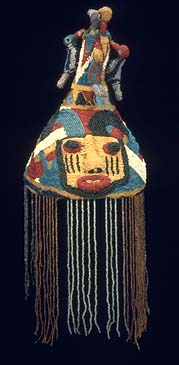
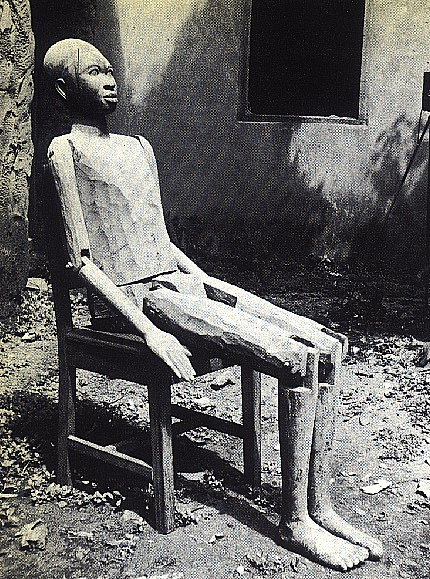
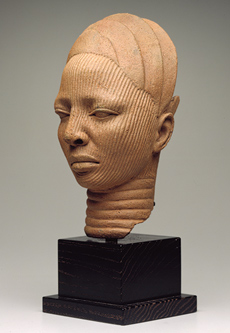
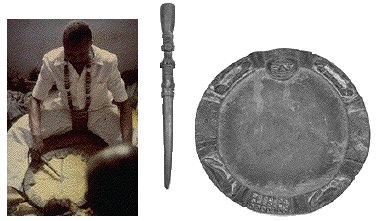
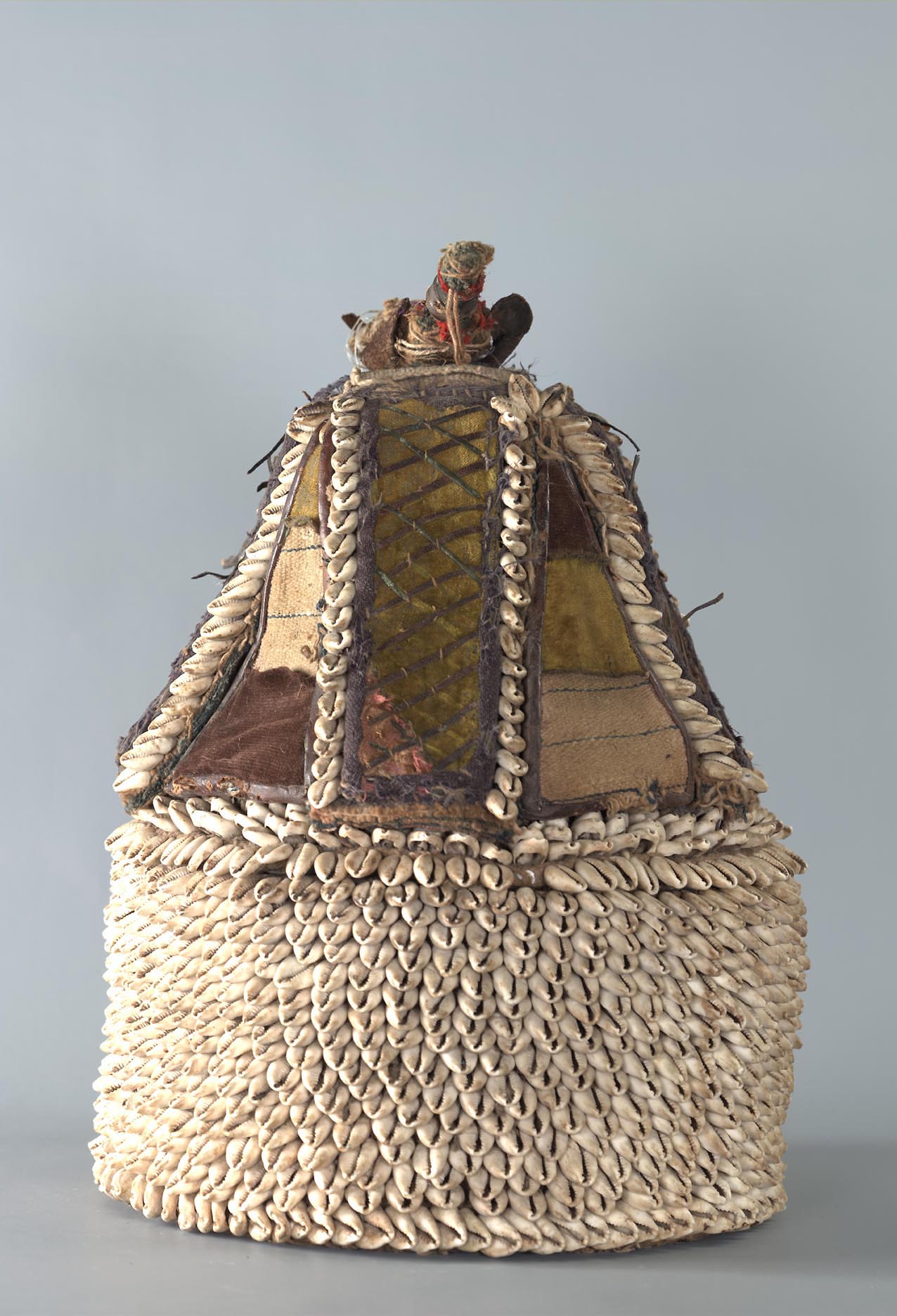
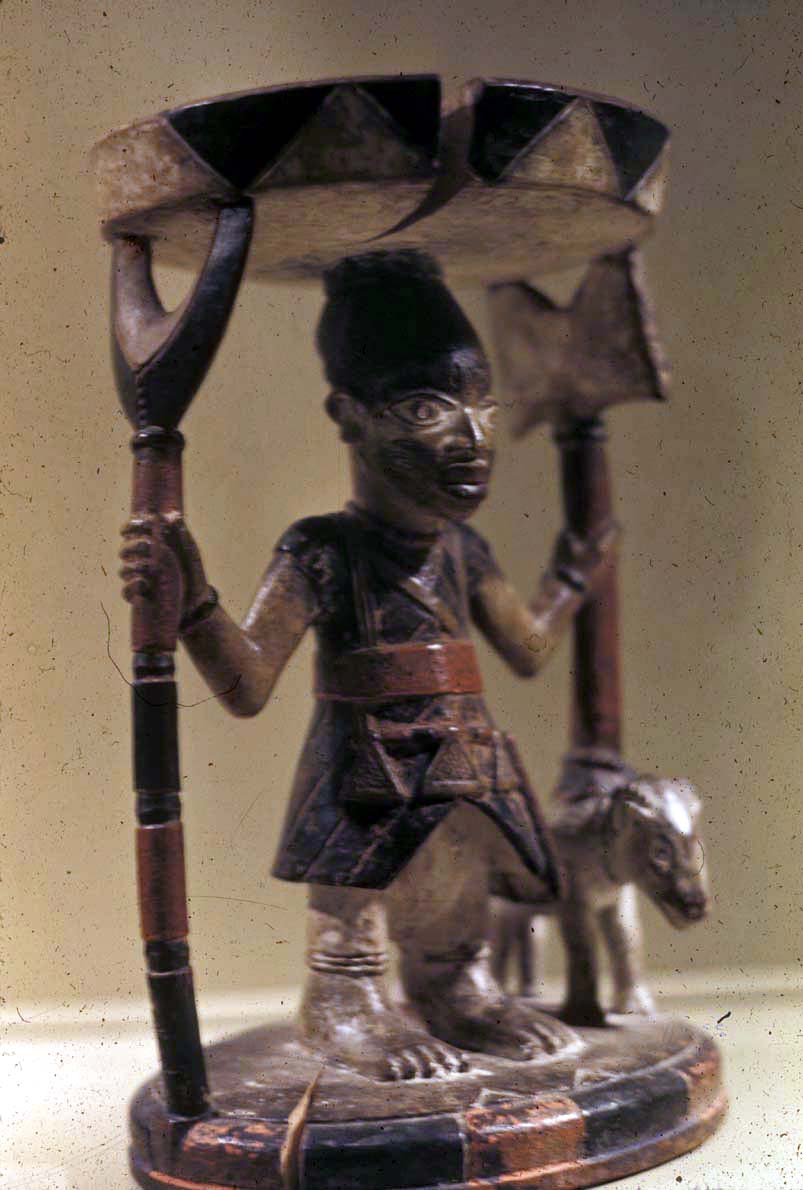
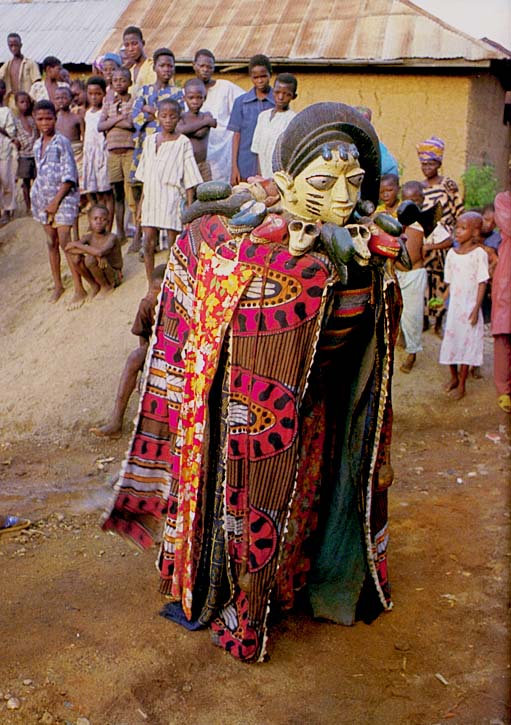

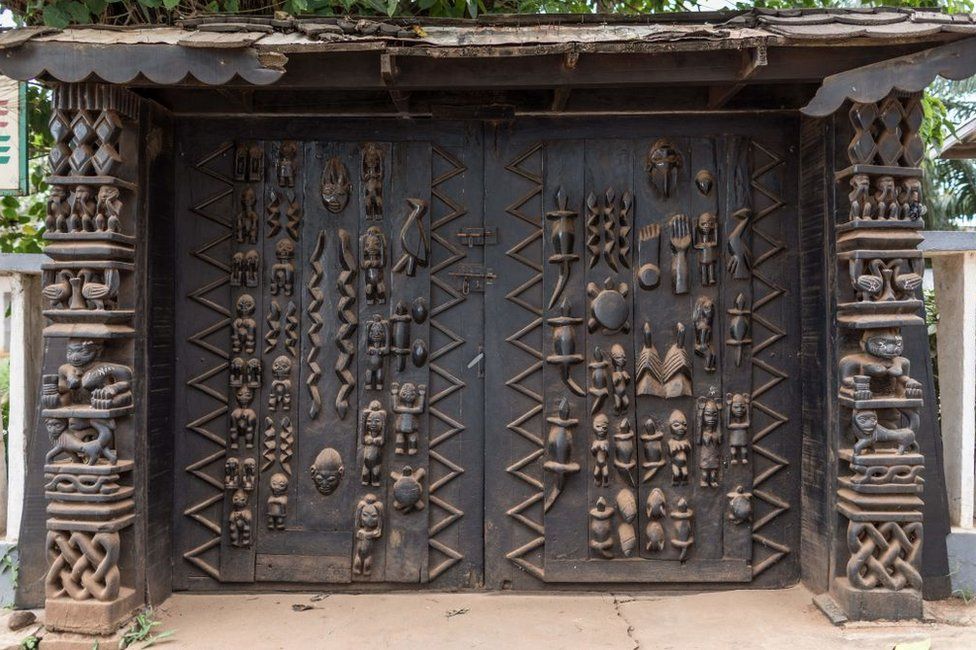
Youba Doors and Posts (museum)
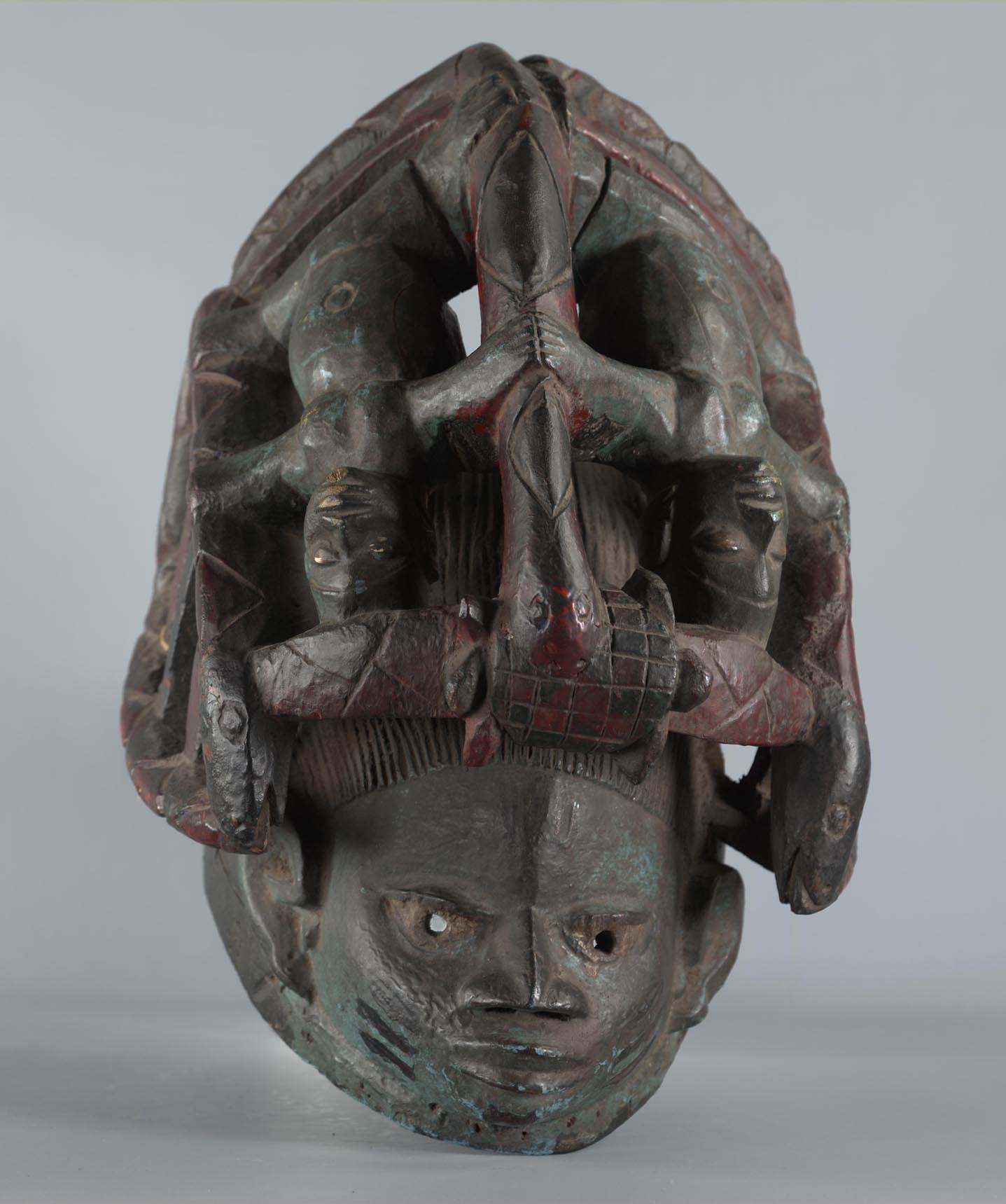
Gelede Mask
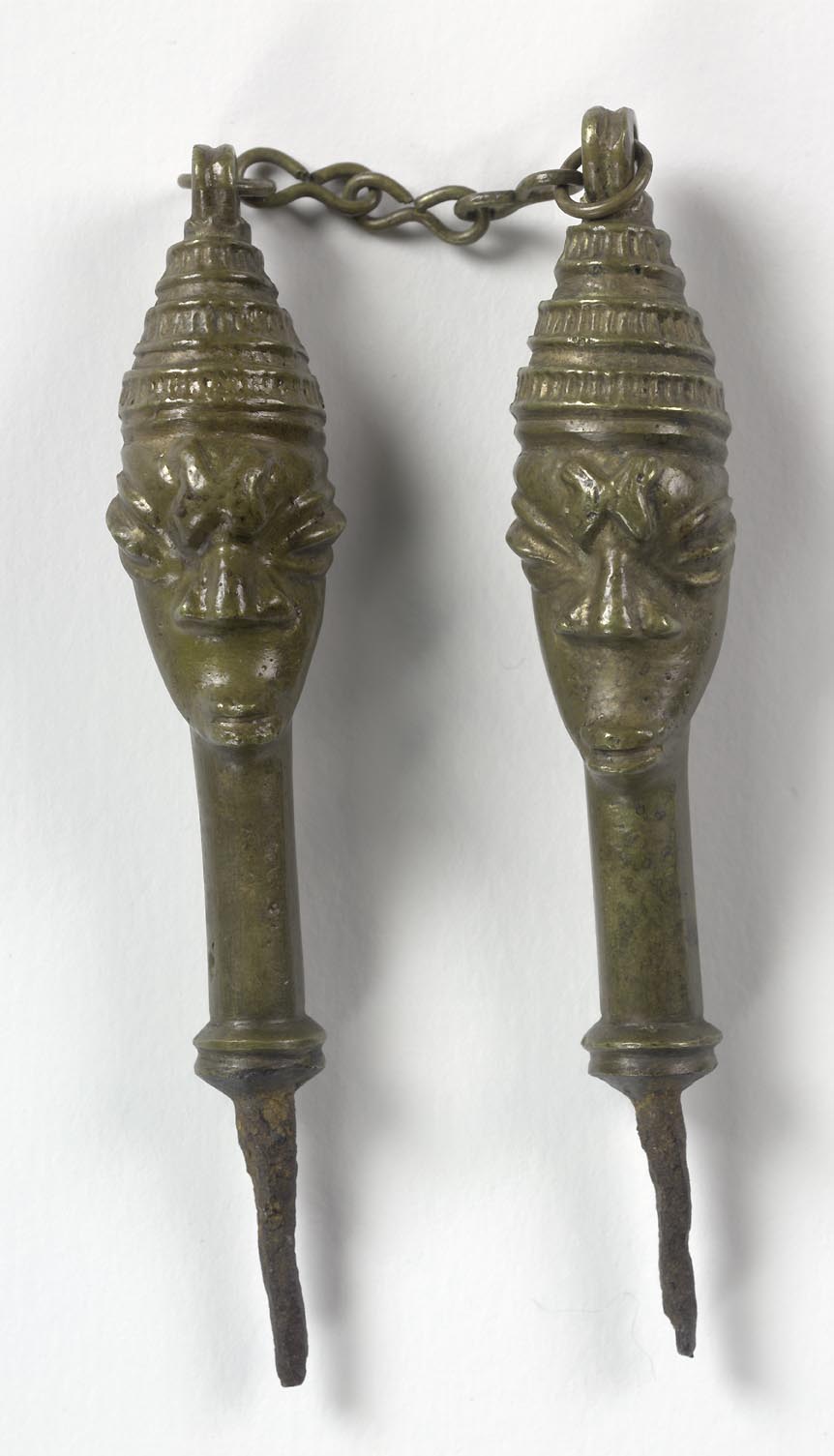
Edan Ogboni
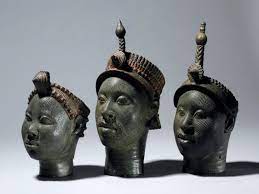
Bronze Commemorative Heads

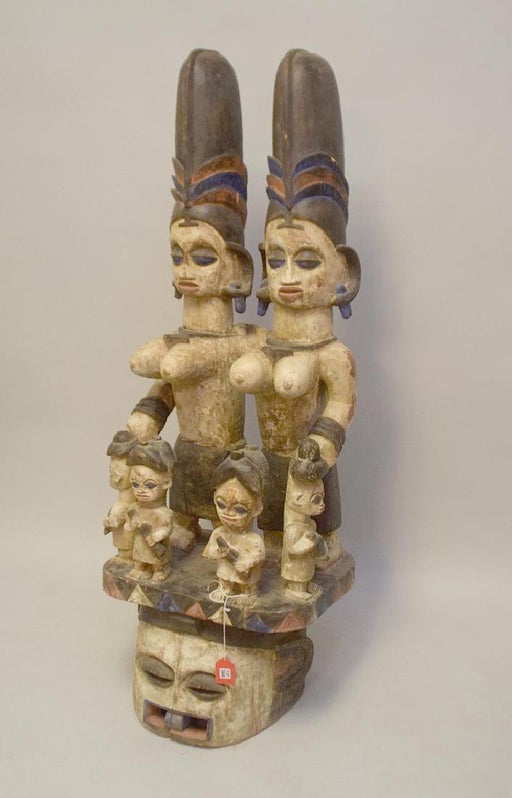

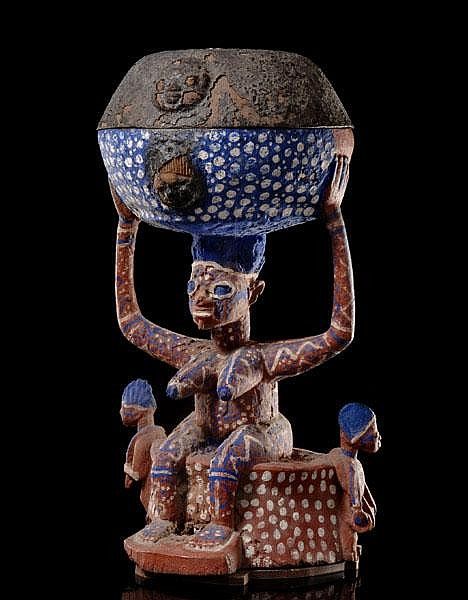
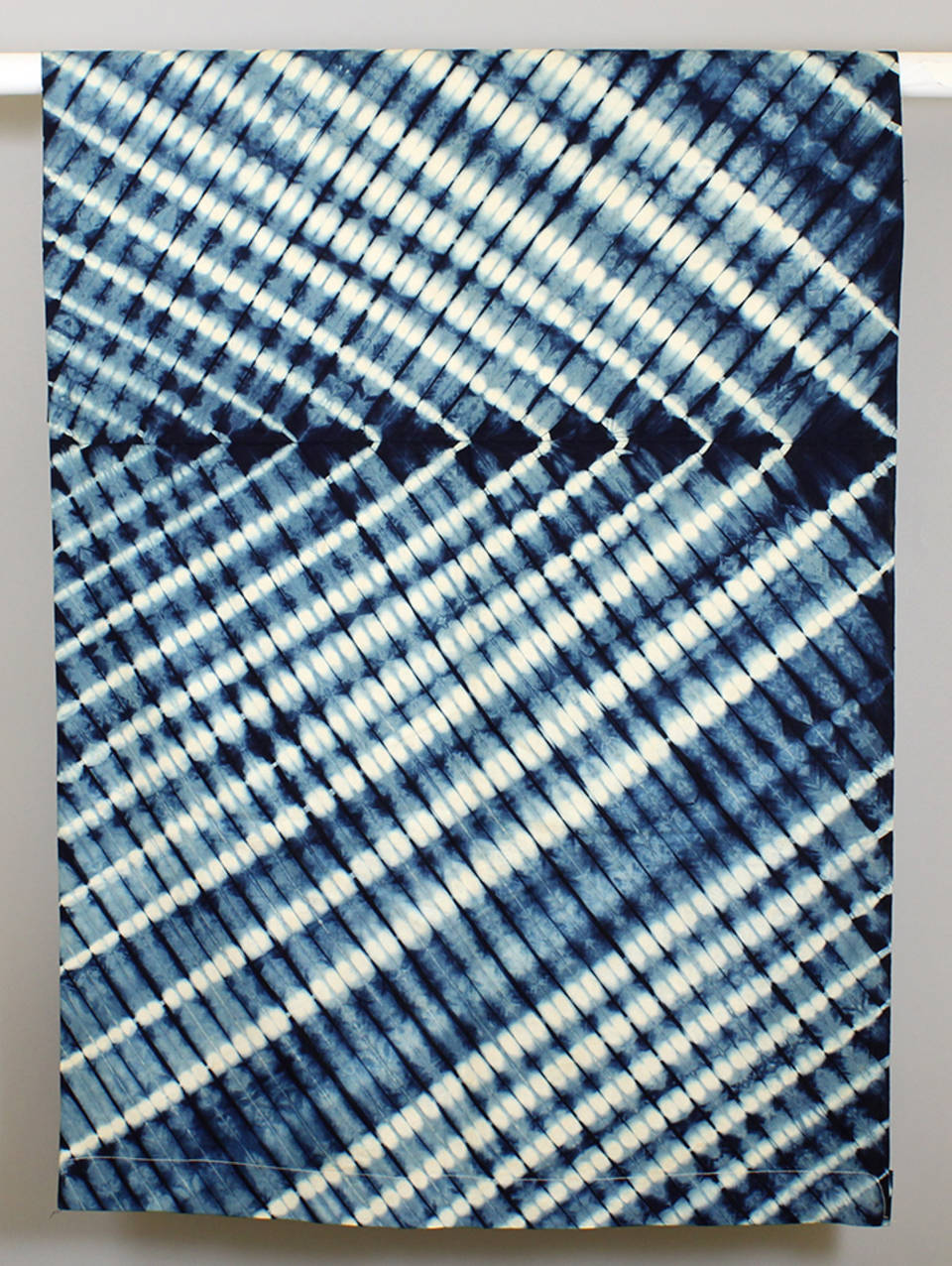
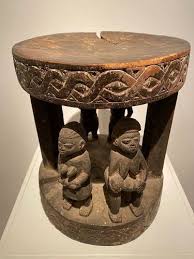

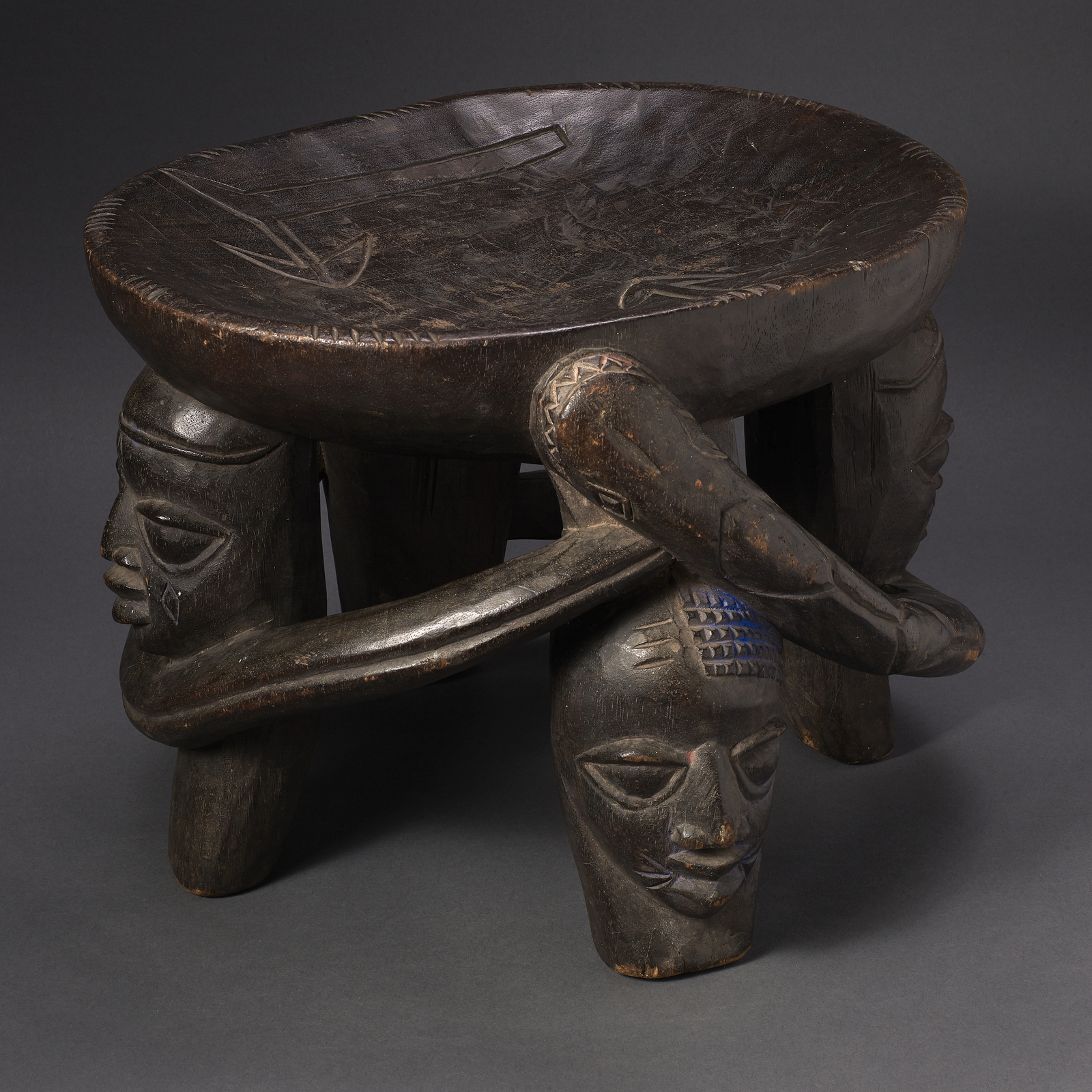
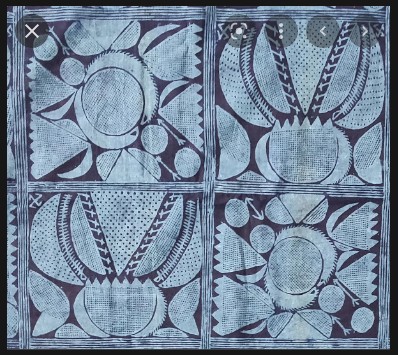

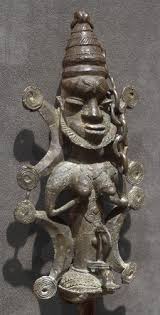
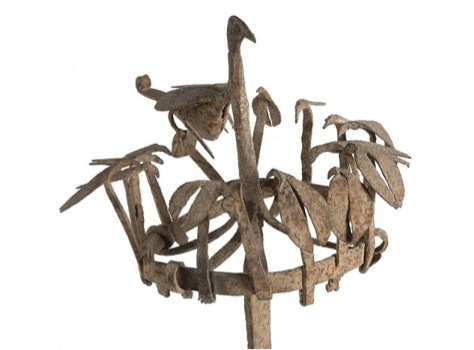
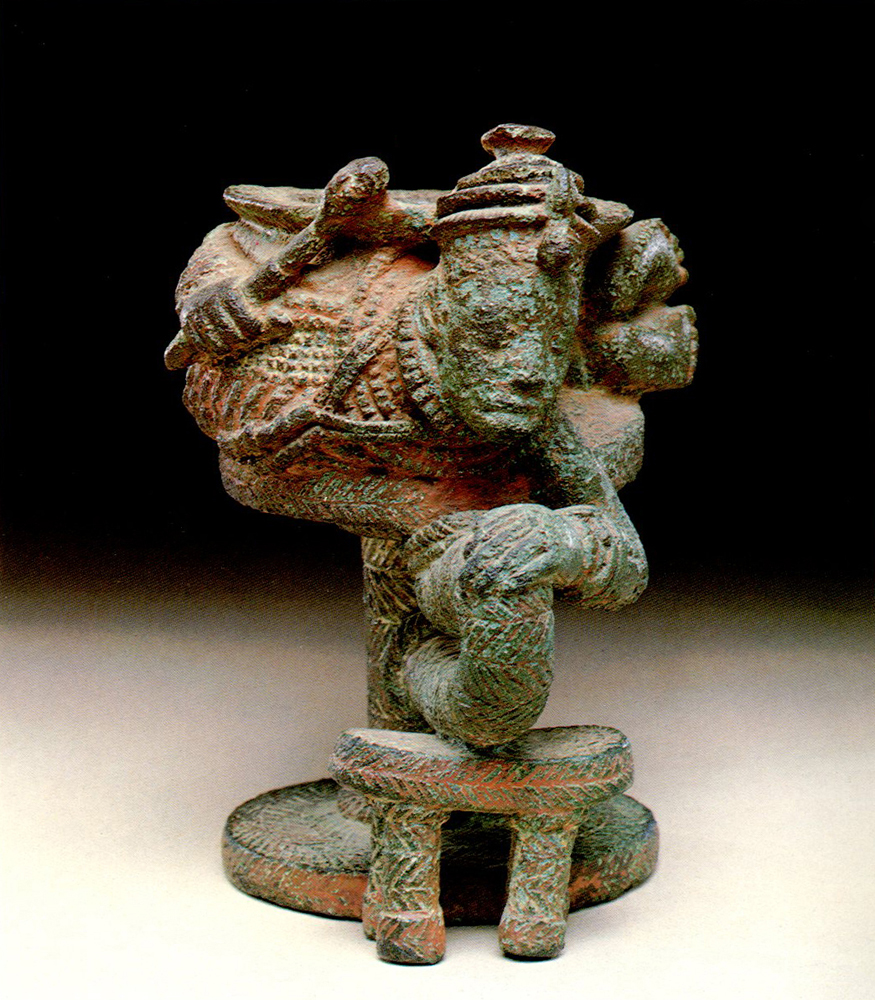
_1.jpg)
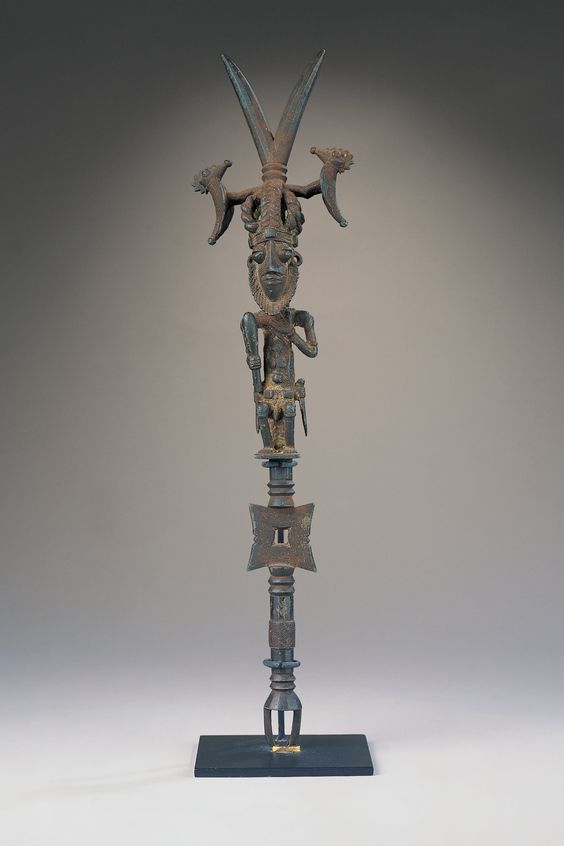
.jpg)
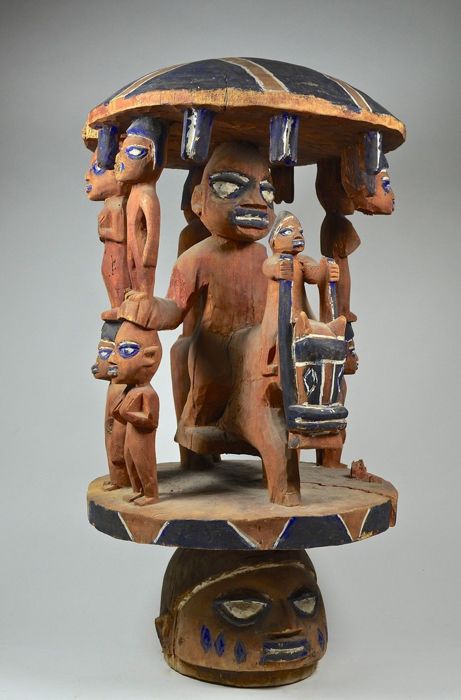

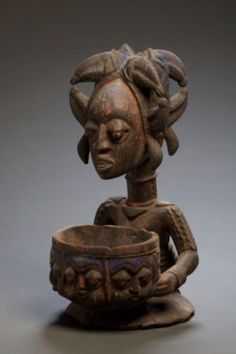

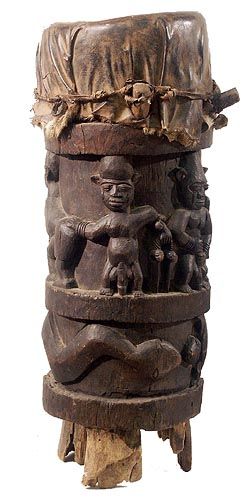
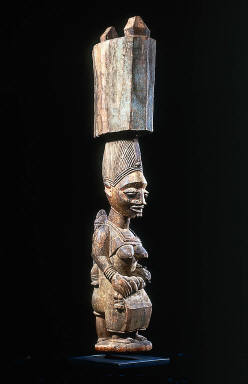
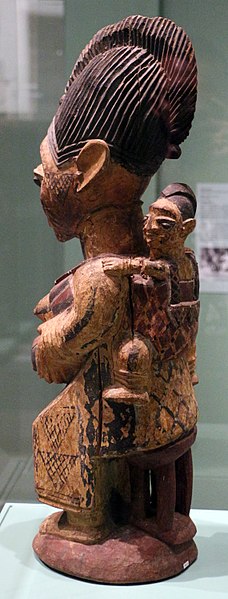
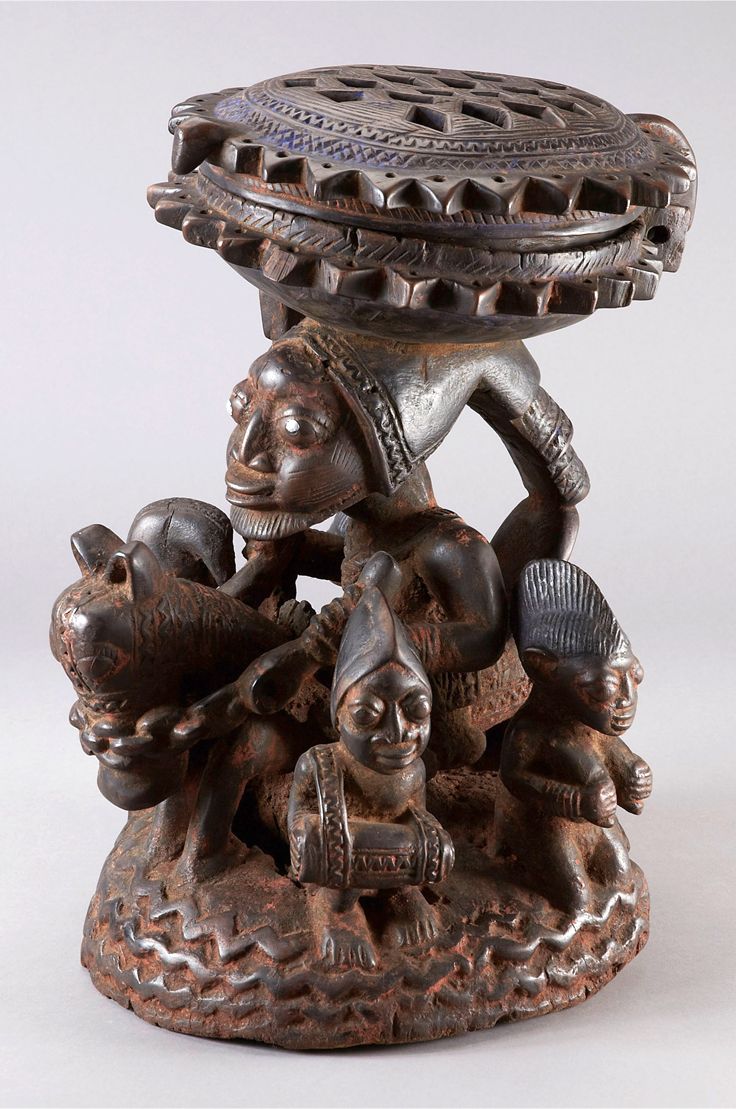
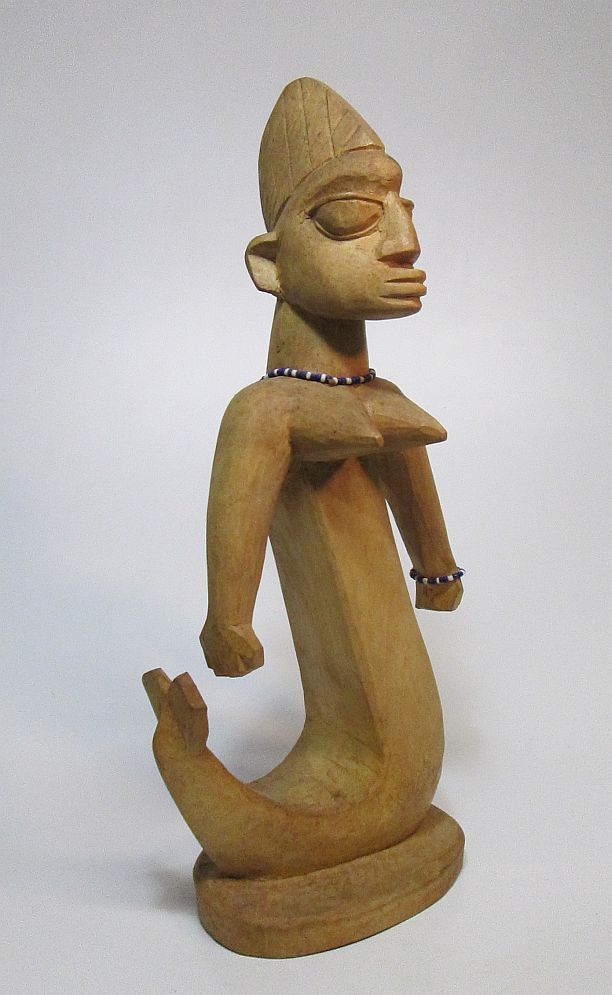
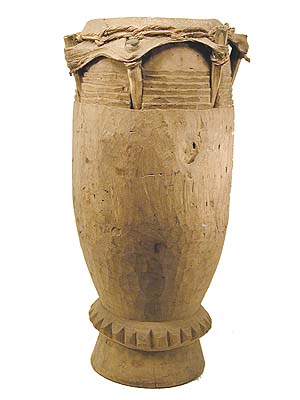

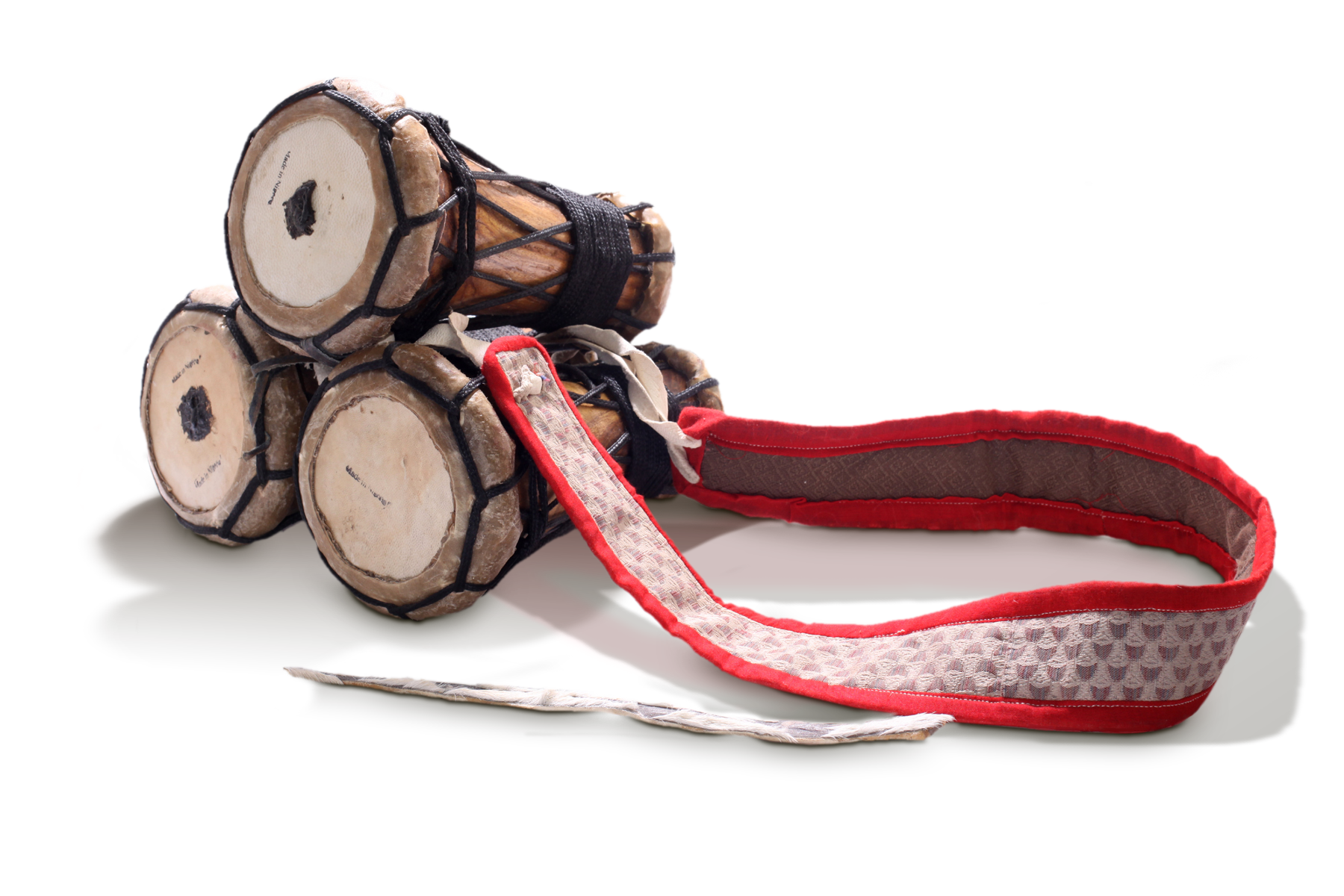

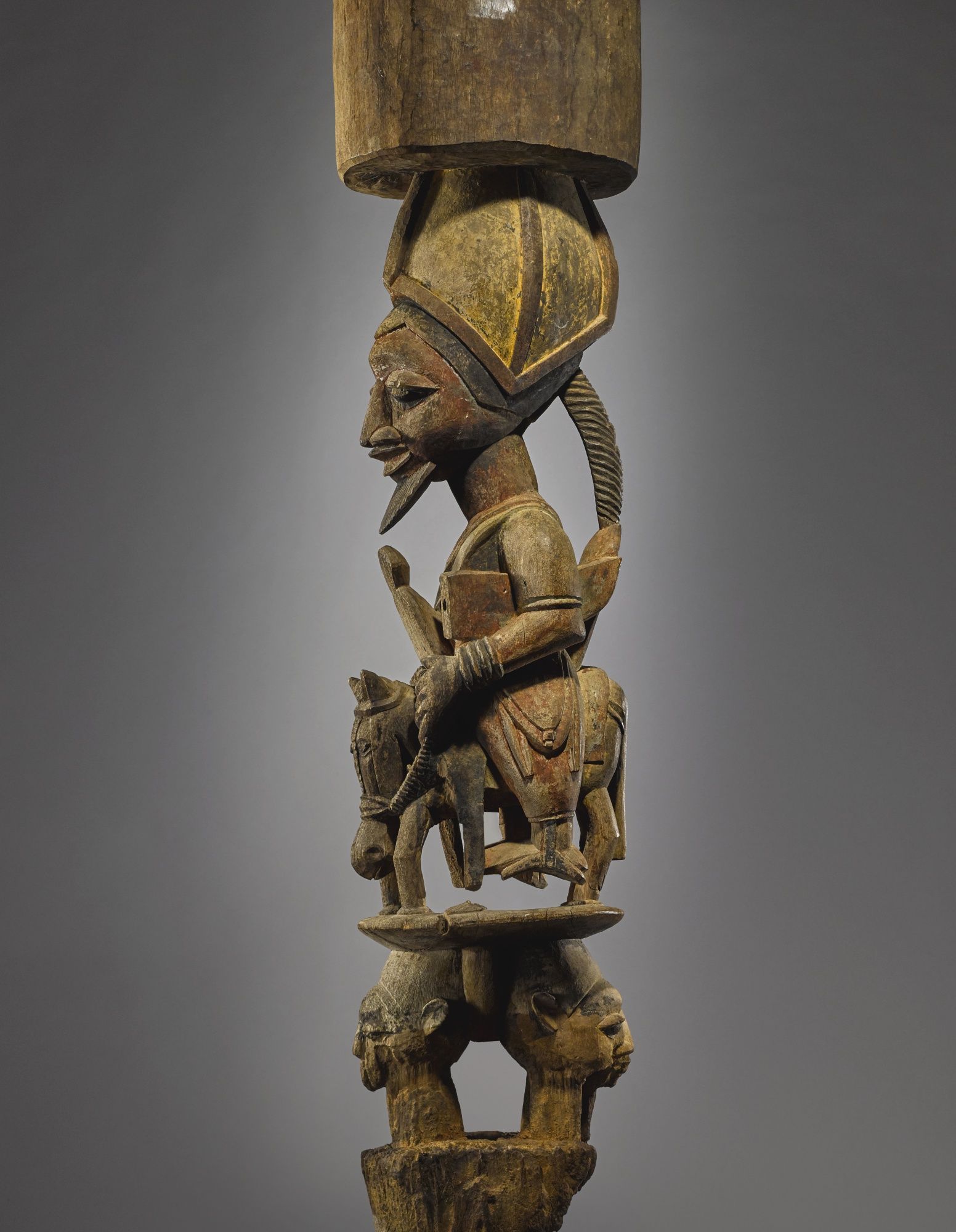
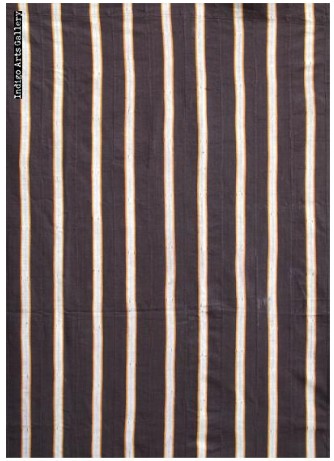
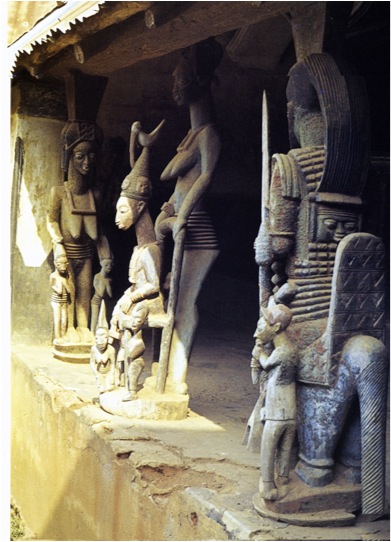
Olowe did work for the king in Ise-Ekiti
_2.jpg)
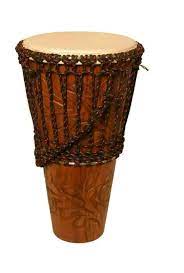


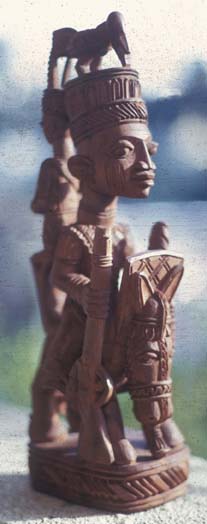
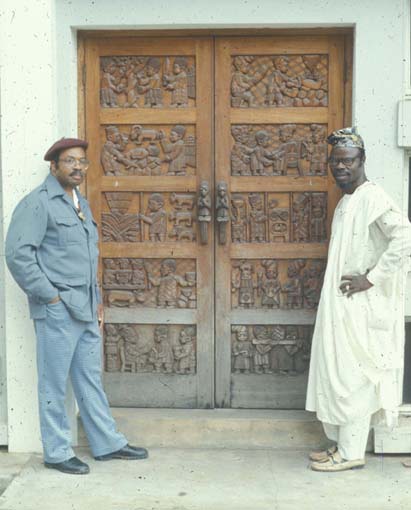
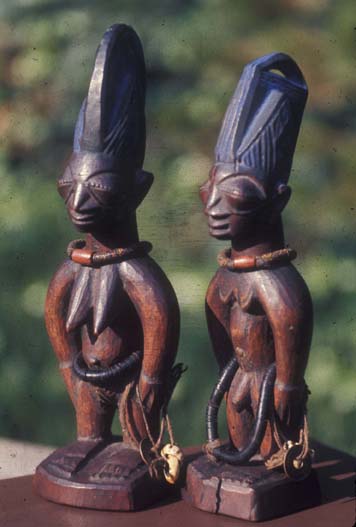
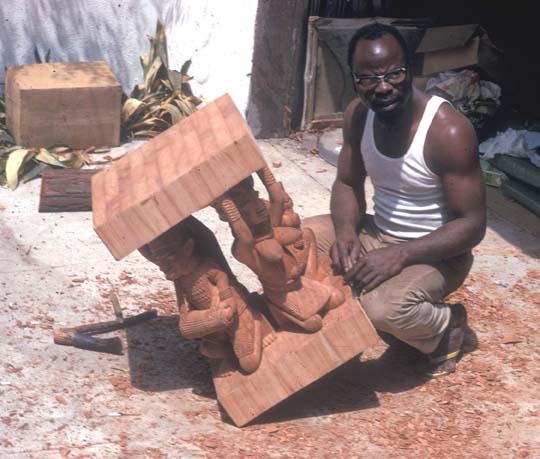
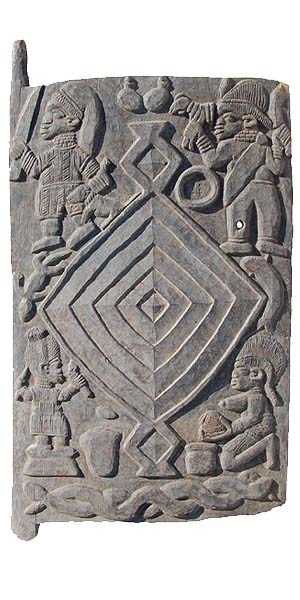
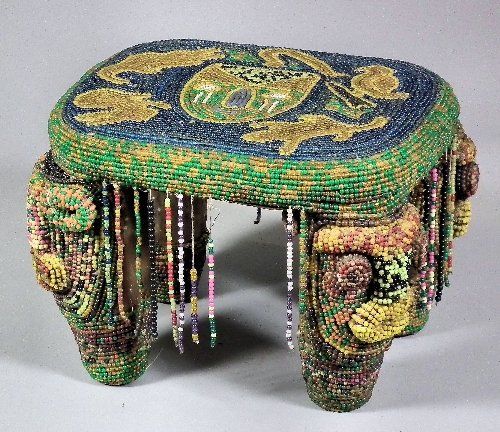
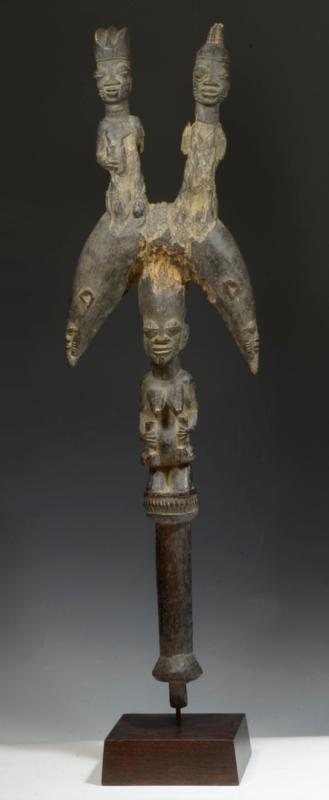
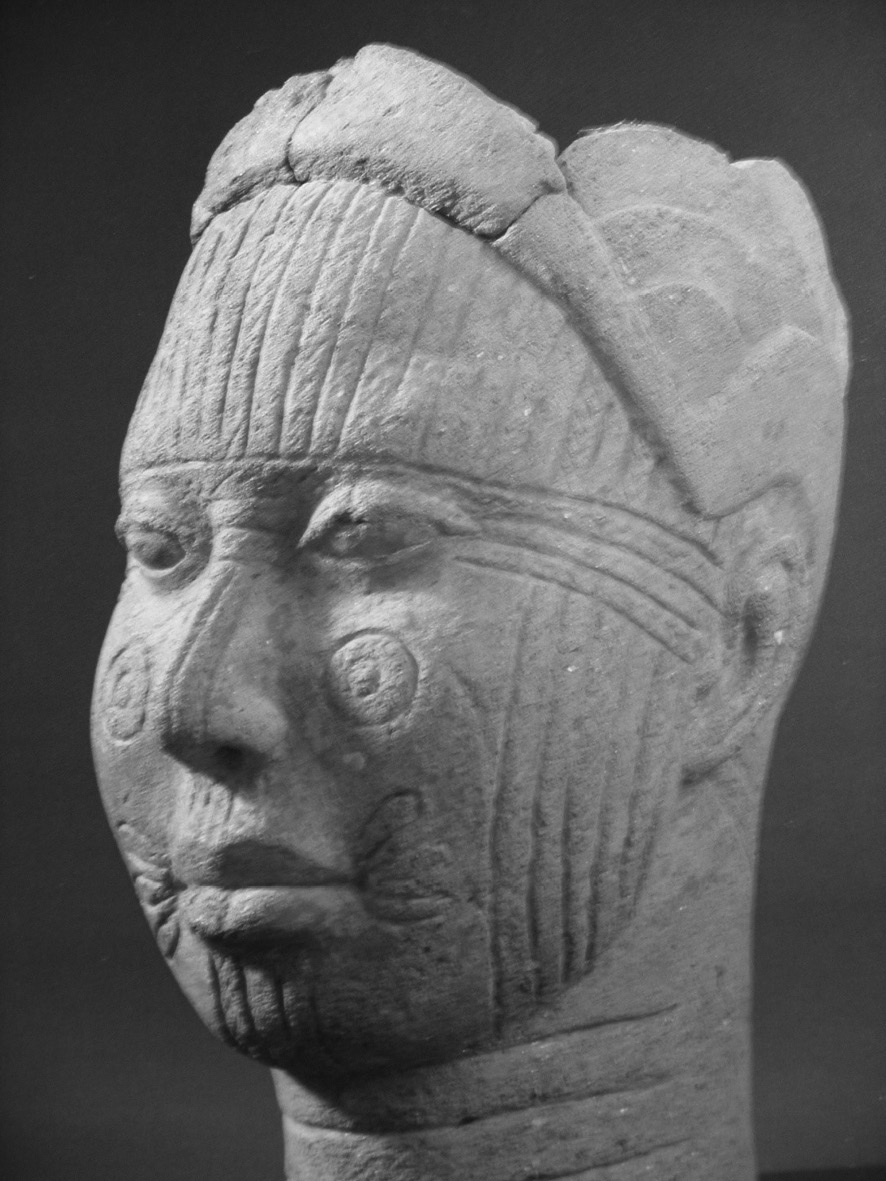

_c1910_to_c1938_(wood_pigment_and_pain_-_(MeisterDrucke-906222).jpg)
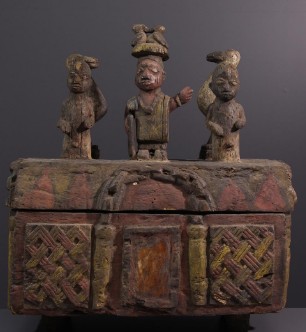

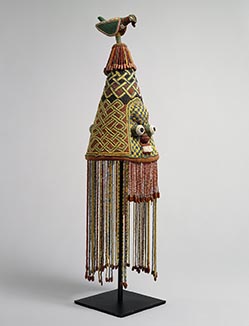
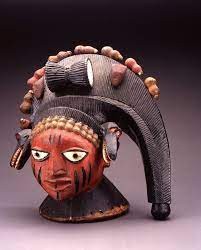
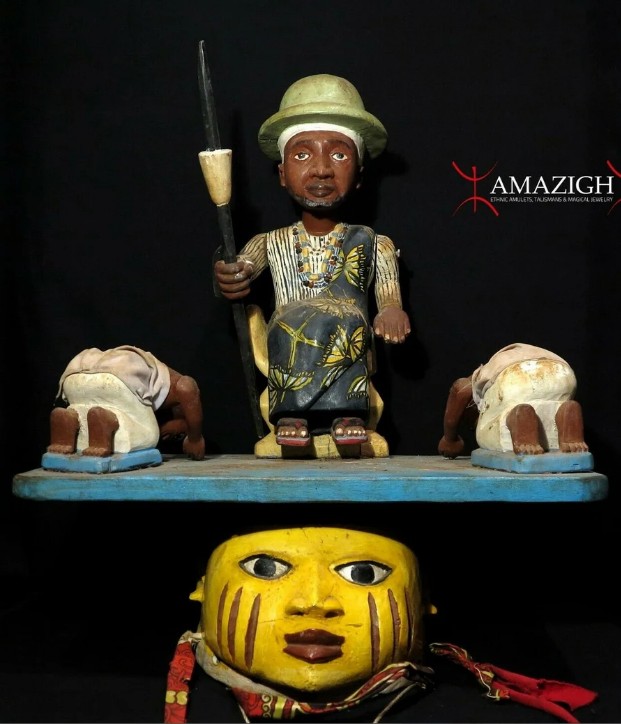


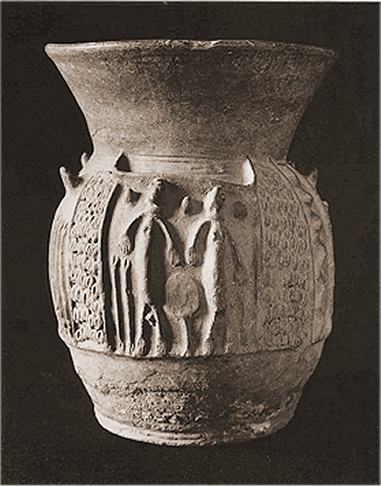


Basket With Lid
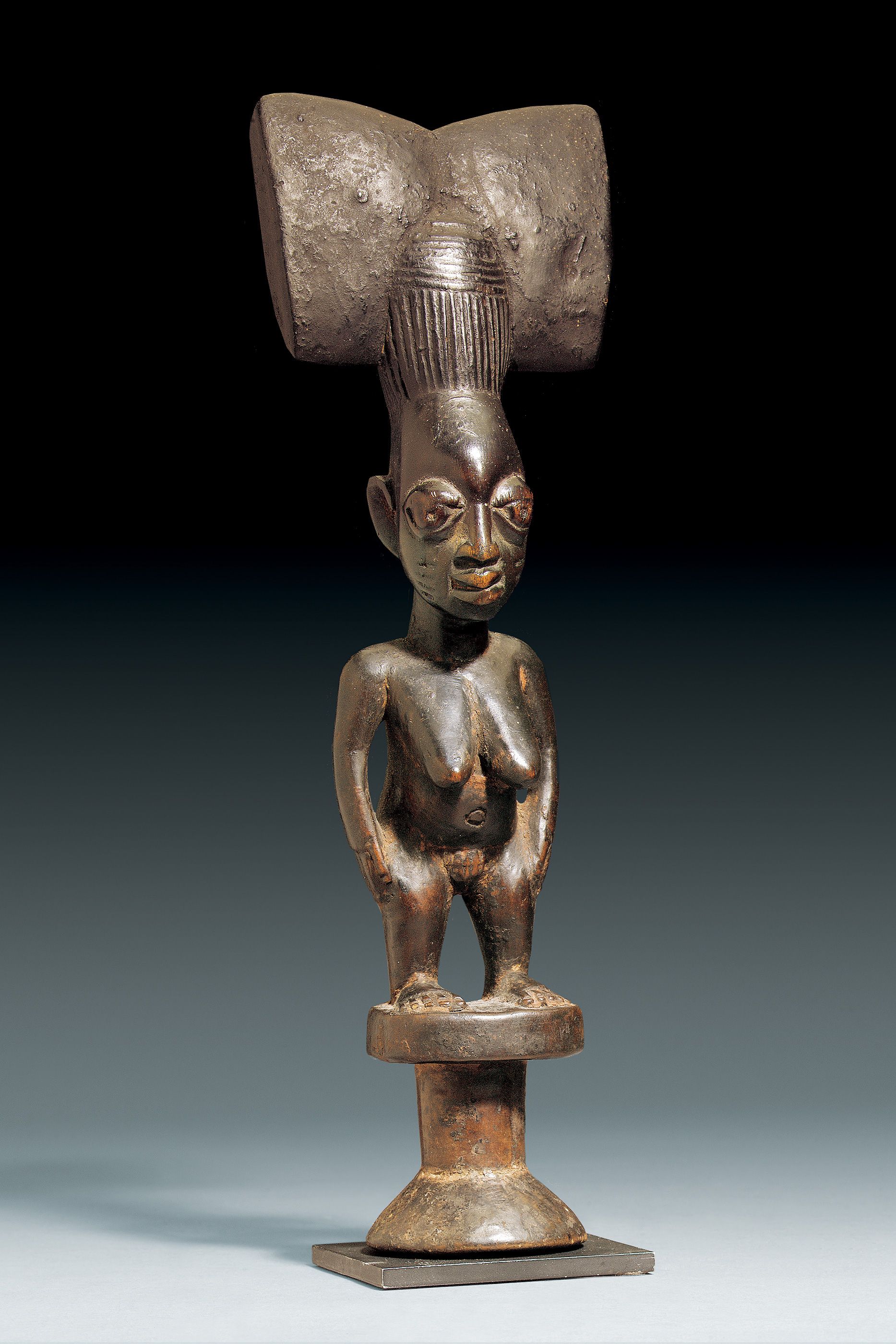
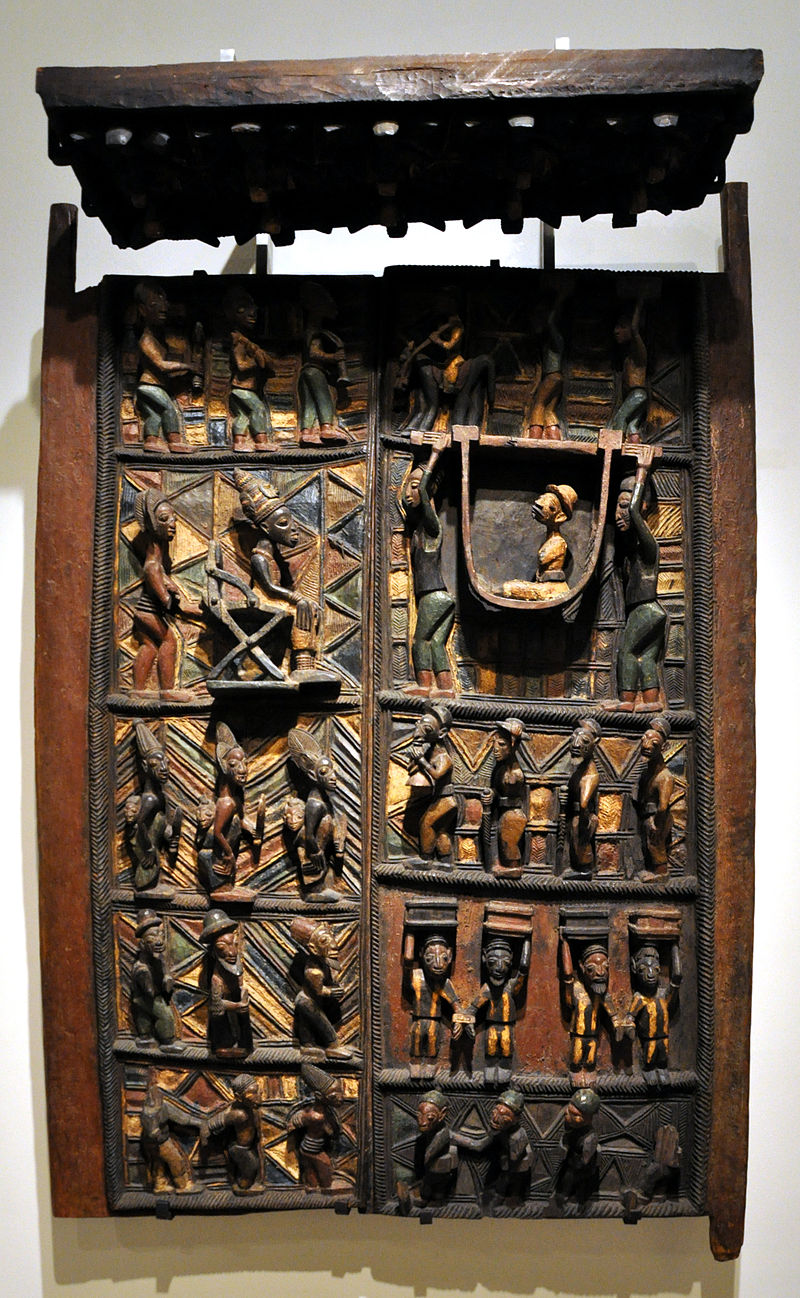
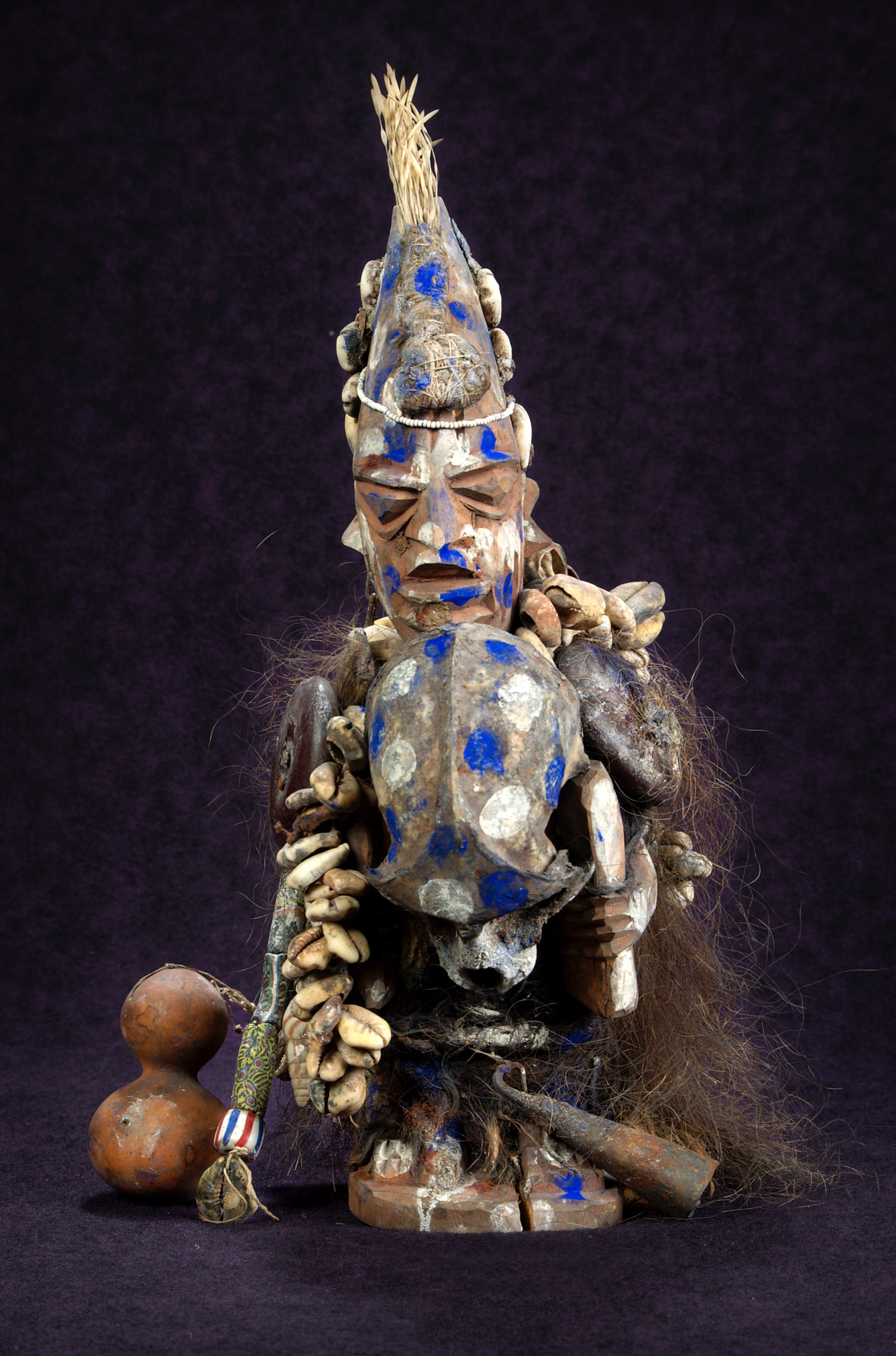
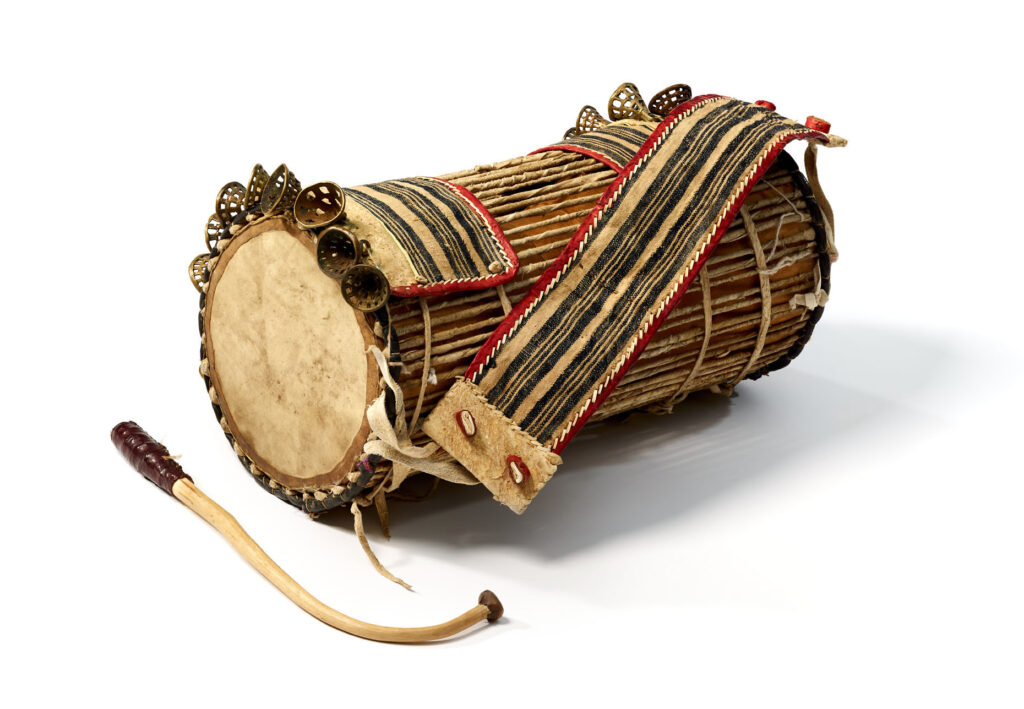
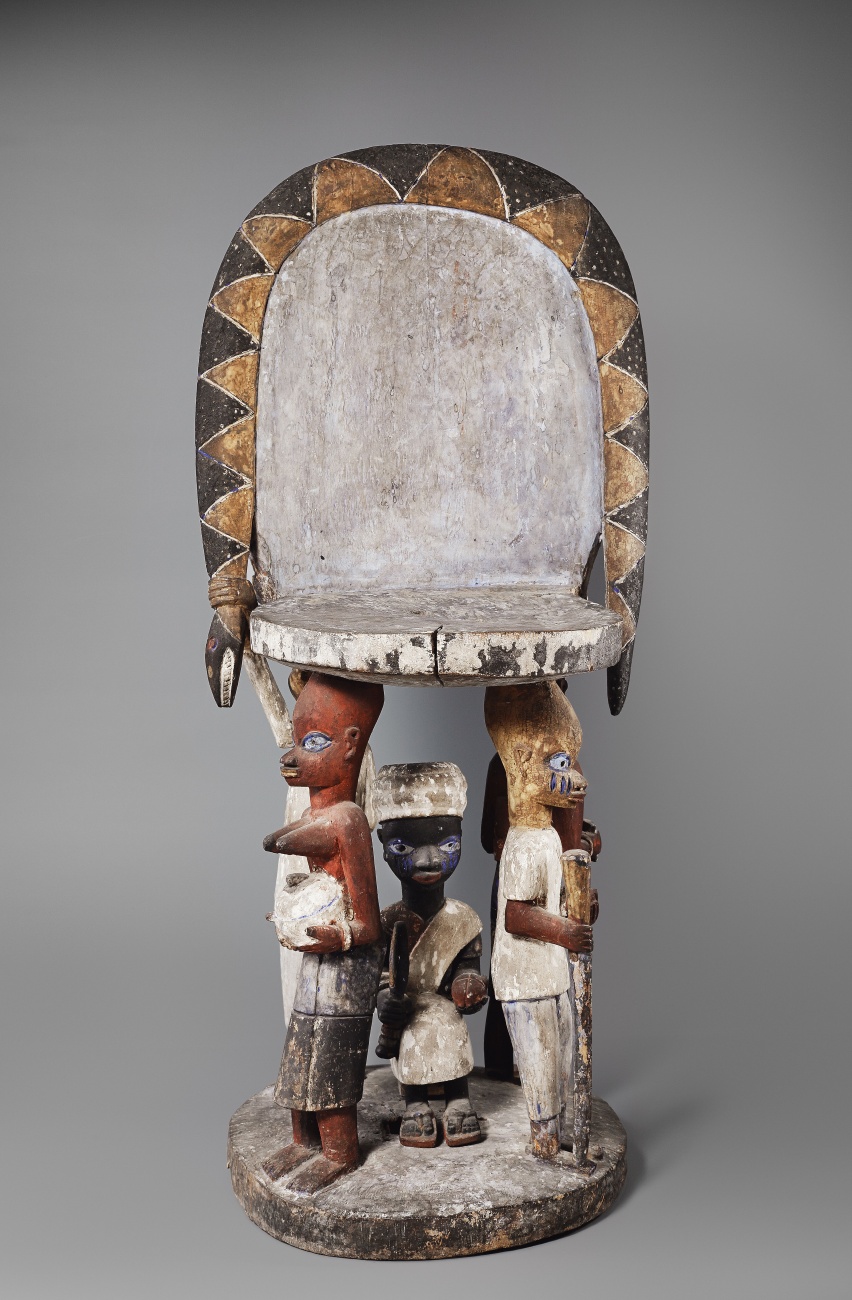
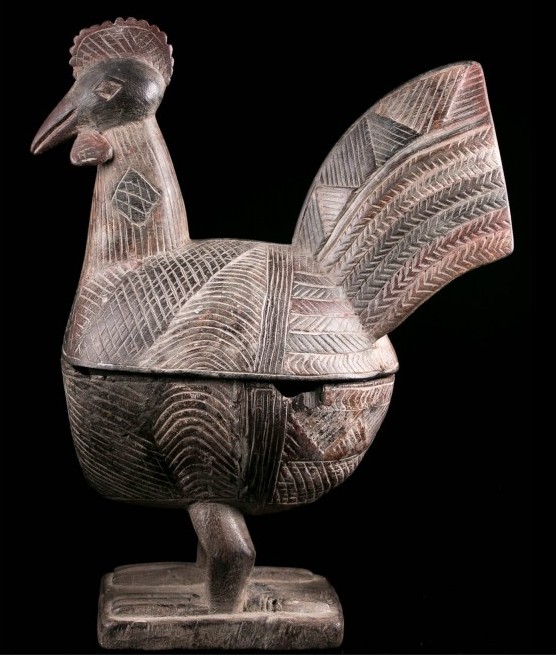
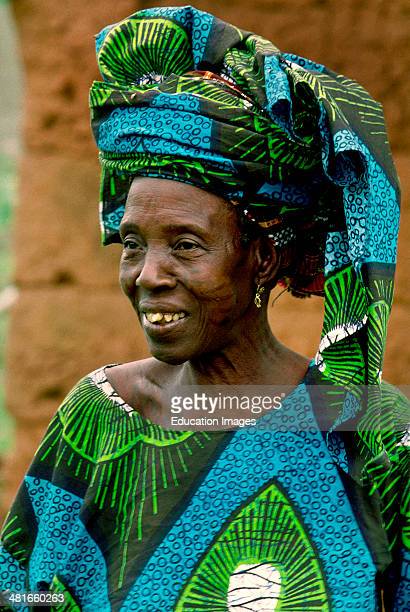
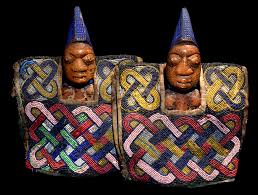
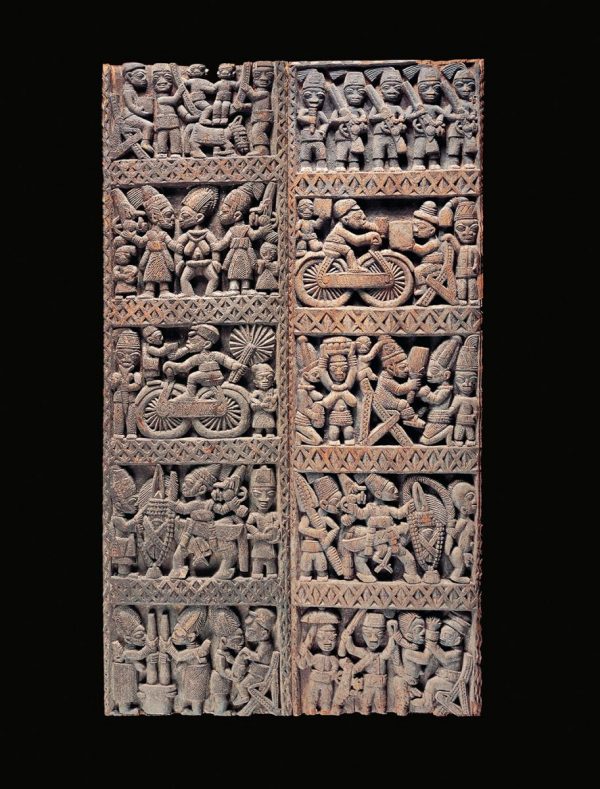
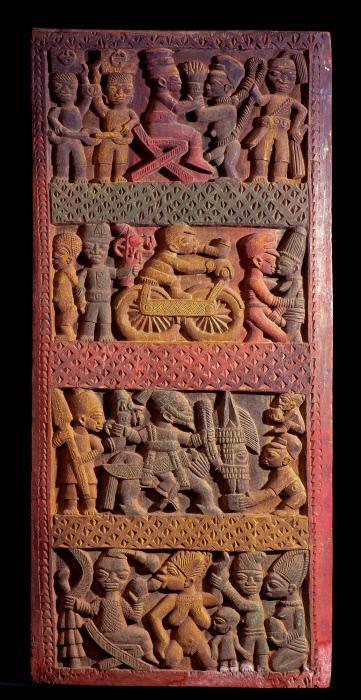
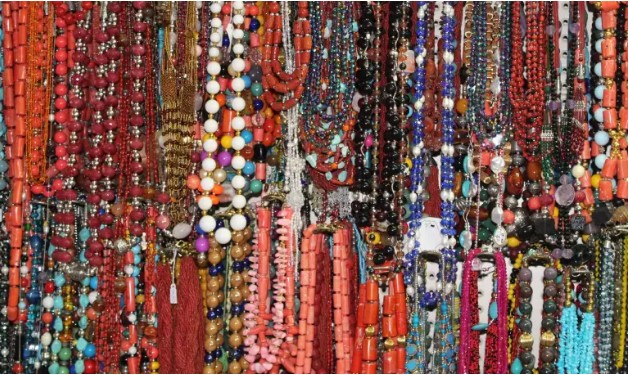
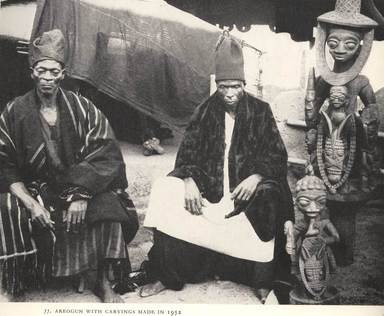
On the Right Next To His Carvings
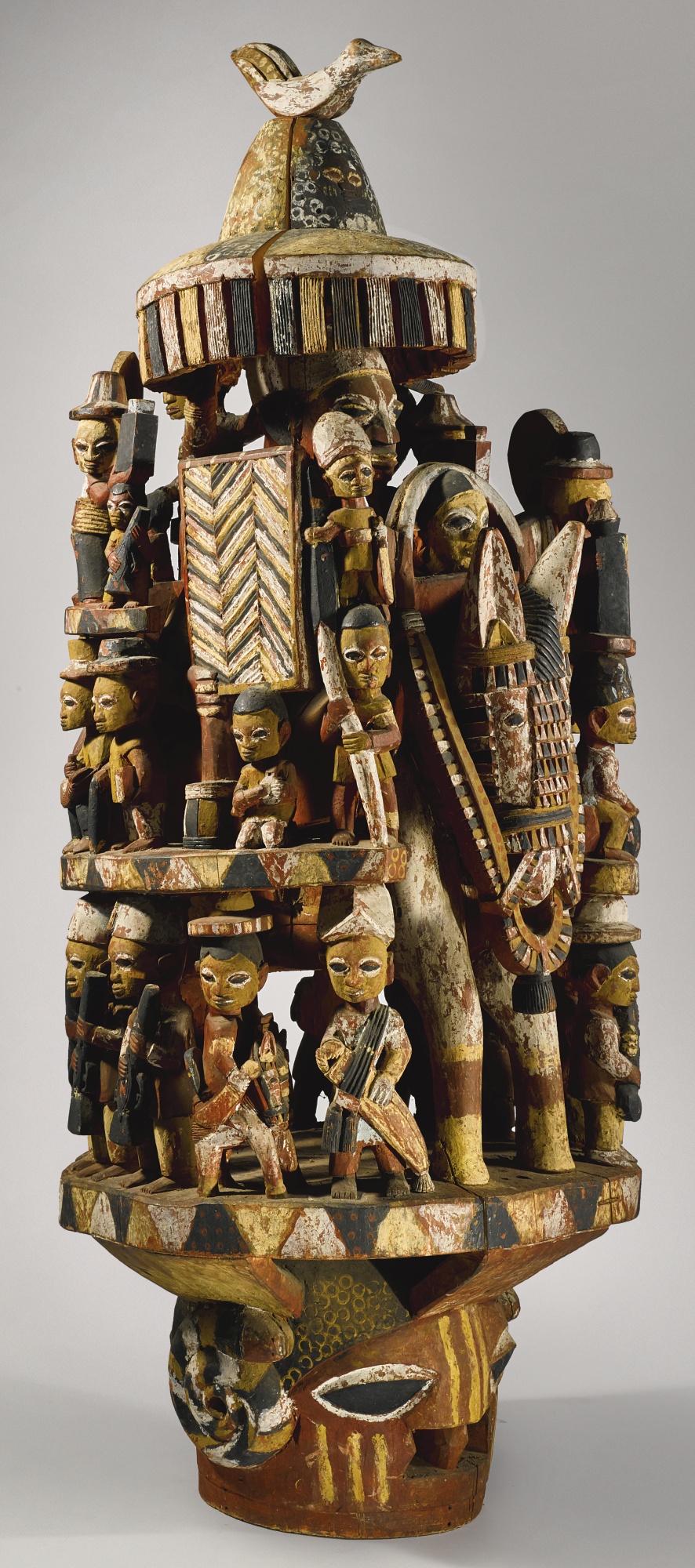
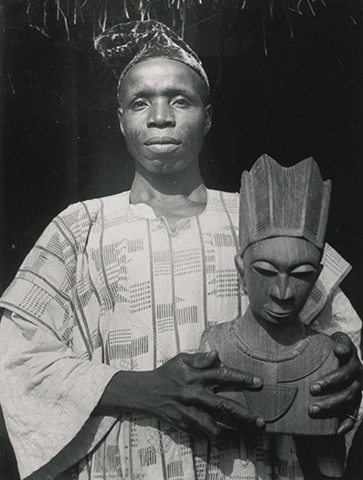

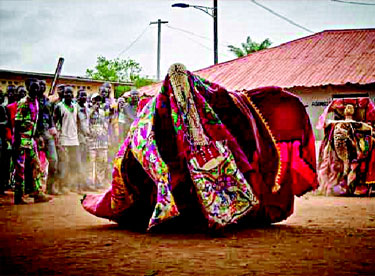
Spirit of the Dead
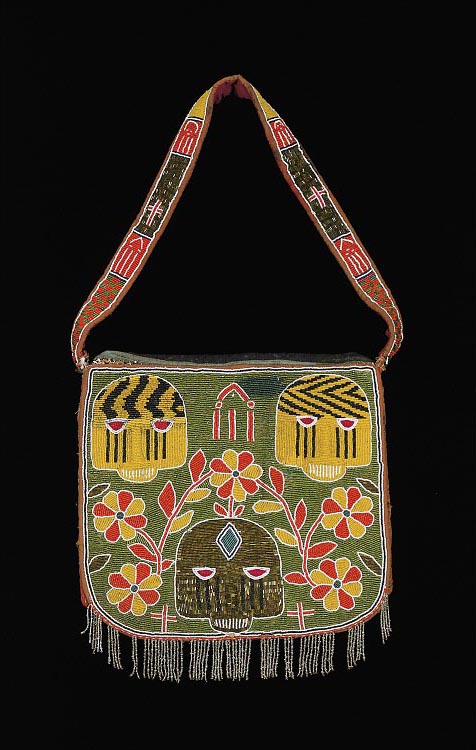
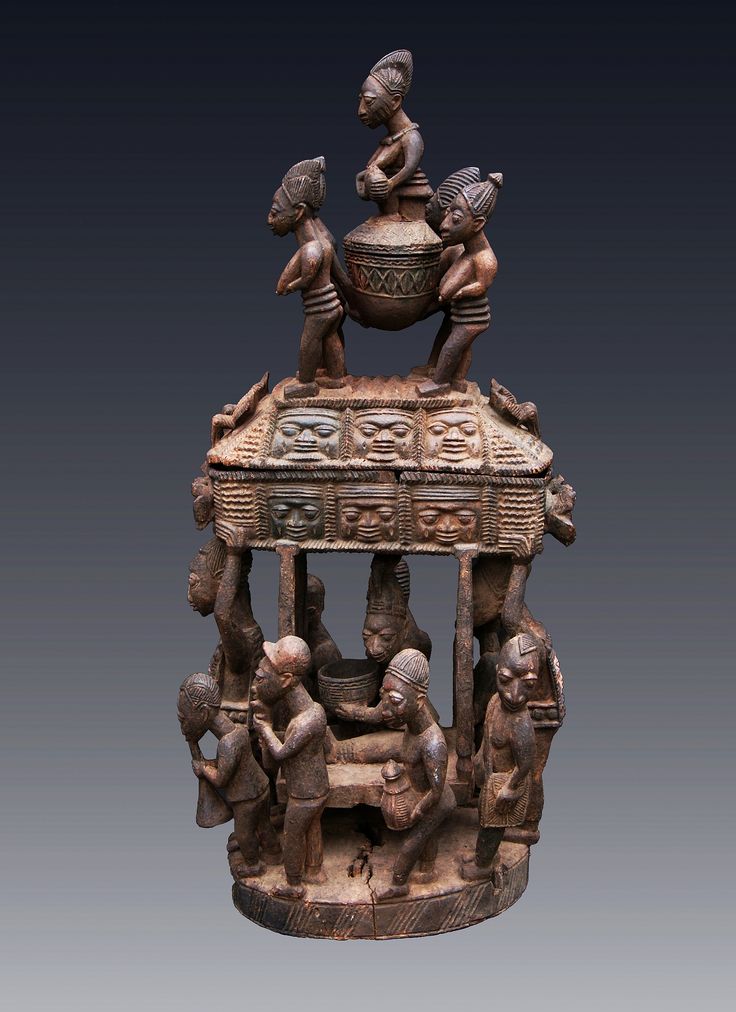


Bag for Ifa Orisha
who was Originally from Efon Alaye
| EARTH METROPOLIS AFRICAN ART |
| ClaudeClark.org | Educ. | African | Igbo | African Studies | Art | Dogon | Poro & Bundo | Akan Art | Ife Art | Benin Art |
|
ART IN ABONDANCE Yoruba-s were the largest producers of African art and images in West and Central Africa. They also produced a wider selection and diversity of work in any given medium, than anyone else in West and Central Africa. Colonialism and church brought about an end to this dominance; but not without leaving a visual record of their exploits and achievements. Warning when it comes to wide selection and diversity the title of extreme art abstraction sadly does not go to the Yoruba. Sahel Africans and Papua New Guinea hold that title. Africans living on the continent of Africa and the Melanesia Pacific Islands produced the most abstract images anywhere in the world, until dawn of the twentieth century. SHORT CHRONOLOGY The people of Old Oyo came into Yoruba land (now known as South Western Nigeria) sometime after the Arab invasion of the Nile Valley in 600 AD. The Oyo-s came from Egypt. They brought with them the Ifa oracle system that unifies all of the deities. Many West and Central African people have forces of nature named after their cultural heroes but no central system to organize them. Without Ifa it is hard to harmonize the deities into one religion rather as separate spirits; separate religions. The region and its aborigines had a creation myth in common throughout the region, so it was not difficult to organize them under one faith and one god T’Olodumare. The Oyo-s used a word that no one could figure out the meaning, because humans are not suppose to apply names to the supreme creation. It is very disrespectful to do that, because creation was here before humans were even thought of. Yoruba people live in South Western Nigeria, Togo and the Republic of Benin (former Dahome). Yoruba historically were the largest art producing community west of the Nile Valley. They are a patrilineal people and the majority of the people in West and Central Africa are matrilineal. Interesting enough matrilineal concepts are interwoven thoughtout Yoruba culture so very little of the regions aboriginal earlier cultural identity is lost. Much of our early information about the Yoruba-s comes from a Yoruba minister named Samuel Johnson. Much of the information obtained by Johnson came from many Yoruba individuals known for their chronicles of Yoruba culture and tradition during the mid and late 1800’s. One such person was Lagunju the Timi of Ede who was the most celebrated orator of Yoruba chronicles during his time. The Timi was not related to the Oni of Ile Ife and he was not a direct line descendant of the Alafin (grandson of Odudua) in Oyo. Lagunju the Timi of Ede was direct line to one of uncles of the Alafin of Oyo, who at first appear to be an outsider and an unlikely source for accurate historical information, but was quite to the contrary. We find through Samuel Jonson that Oni of Ife was not related to any of Oduduwa dynasties. The Oni of Ife is related to the royal line of Yoruba Oyo now, but not until the nineteenth century. The Oni was related to the aboriginal people that lived in the region. We also learn that the kings that claimed to be the legitimate rulers of Yoruba land were the five grandsons and two great grandsons of Odudwa’s oldest son of Odudua. Many Yoruba and Europeans believe the stories that they obtained from the Alafin of Oyo and the Oni of Ife to be true, but only half of those stories are true. The first Alafin had a beef with his uncles when their brother/father Odudua's oldest son died; leaving the line of succession to the thrown in a big mess. The oldest son of Odudua was the Alafin's father, The father died leaving the inheritance of the thrown to the next son. The two next oldest, children of the desist’ father were girls so there was no one in that family to take the place as leader of the Yoruba people; thus Oyo Empire was born and a disgruntle nephew proceed to beat the living crap out of his uncles. This family feud continued for several generations until after the first Europeans arrived. Europeans used family division to fuel the slave trade. When slavery ended British moved the power of Yoruba kingship from the Alafin of Oya to the Oni of Ife; then everyone was satisfied. HUMANITARIANISM Yoruba brought human rights to West Africa long before the coming of Europeans to West and Central Africa. It was common practice to kill twins in both West and Central Africa until recent. Yoruba were the first Africans to out law infanticide of multiple births. Some cultures living near Yoruba land began establishing the same practice. The Yoruba brought an end to annual sacrificial offerings of a woman to the Niger River. Human scarifies to the gods/deities was a common practice throughout many parts of Africa. When Christian missionaries came they did much to slow down the process of human sacrifice, but did not eliminate human sacrifice as they would have you think that they did. ICONOGRAPHY VS IDEOGRAM Iconography includes all methods of design script and images used in some form of sign or writing communication. Characters and alphabets are used in place of the spoken word. The intended audience reads the script/sign and understands what is meant, or what is to be done without some one verbally telling them. Icons in African art have names, however they are not always used to leave a message for someone. Image icons can used to complete surfaces and additions to the main body of the work such as ears, eyes, hair, finger/toe nails, jewelry etc. We can view them as mental tools the artist uses to construct and complete his work of art. In some cases the ideograms are small sculpture patterns on top of a larger sculpture. I other cases ideograms function as relief designs on the sculpture surface. In any case in order for the design to function as a ideogram it must be legible and have a purpose. It is not suppose to just fill in open spaces and look pretty. That ideogram is saying something that affects the entire sculpture. An ideogram is both a language tool and design, whereas design by itself is not an ideogram or a portion of a script used in writing a language.
STRUGGLE BETWEEN DECORATIVE DESIGN & INFORMATIVE IDEOGRAM Much of the works in to days-African sculpture are filled with designs and patterns and not ideograms. Many cases the woodcarver has a quota to meet time wise. He needs place some designs on the sculpture; put it on the shelf and sell it. “I have a question sir. Why not call ideograms design and map ideograms patterns”? You have a very legitimate question. One that is not always easy to answer, Think of an ideogram as art writing. Your ideograms like character or alphabet writing must be legible so that one must know what you are saying. The artwork that you place the ideogram on must be relevant as well. Both image and ideogram put forth a message and help to strengthen an idea. A person using ideograms without the names and meaning is illiterate.
These pictures above, depict Egyptian hieroglyphics on papyrus paper, Chinese characters carved on tortoise shell, Ashanti adinkra symbols inked on textile and Etruscan writing carved in stone.
IDEOGRAM WRITING VS SYMBOL ICONS This is the story of human literacy. Our story begins at an advance stage of human civilizations. We have several kinds of scripts and icons that have been in use around the world and some are still in use today. Some scripts and characters are in used for the purpose of communication and trade globally. Christopher Columbus is the founder Western Civilization. Western Civilization is the only civilization known to humans to have a precise beginning date and birthplace. Western Civilization began October 12th 1492 in the Bahamas Islands, North America in the form of colonization. Europeans did not know that they were taking part in developing a new civilization until sometime after the French revolution when Europe lost three of its colonies. We still don’t have a date yet for when Europe acknowledges the fact that they and their colonies had developed a global civilization and when the term “Western Civilization” was first used. Europe was not trying to develop a second civilization. They were having enough trouble with managing European civilization; that is what the French revolution was about. The term “Western” was applied to the most powerful former British colony in the Americas “United States of America”. Europeans still use that term West and Western when referring to the United States and the only people referred to as American citizens come from the United States. American white people still fantasize in being European and having a European education, which is false. They never want to admit that the education system in this country is still colonized. If you are German or Italian you must culturally transform yourself into a “WASP” or White Anglo-Saxon Protestant in order to become a true American. When Americans take up arms to go to war to salvage a former British or French colony and its national resources they don’t tell Americans that they are licking French or British “asses”. The government lies and says that Americans are fighting for democracy. Mentally Americans still function as a British colony. Egyptians may have been the first to develop an advanced writing system. Picture characters and hieratic script took place around the same time in Egypt. Egyptians invented paper, it was very expensive to make. Egyptian hieroglyphics are used in jewelry and various art forms around the world. Ashanti developed symbolic icons only three centuries ago. They use it for printing designs on fabric. Today Ashanti adinkra symbols are being used around the world for tattoo, jewelry and other art forms. One of my web pages containing adinkra symbols and their meanings get between eight hundred to one thousand hits every single month. Chinese carved inscriptions on oracle bone before writing with a brush on paper. When they invented paper the Chinese first used paper for wrapping packages. Chinese rice paper was cheaper to make than Egyptian papyrus paper. Paper making methods used by the Chinese are in use today. Chinese characters are being used for tattoos and other art forms as well as serious writing. One of two global writing systems consists of Chinese characters the other one is an Etruscan alphabet. Etruscans developed their alphabet and carved their information on clay tablets. That same alphabet is what we use in Western Civilization after it went through several revolutions first the Roman, Latin in the Catholic Church and finally Europeans and the English. The Macedonian Pltolemy Dynasty was the last chapter in Egyptian Civilization. Macedonian ruled after the death of Alexander the Great in 323 BC and ending with Cleopatra’s death in 30 BC. The Pltolemy were business people they used the papyrus paper invented by Egyptians to record Greek, Etruscan, Roman, Syrian, Assyrian and other clay tablet scripts of Mediterranean and Western Asian people. All of these people wrote on clay, wood, bone; what ever they could get their hands on. They were desperate to have their history recorded on something lightweight and permanent. Macedonian Pltolemy were not interested in Egyptian people or Egyptian Civilization. Their only interest in Egyptians was how could Egyptians best serve Macedonia and Greece. The Rosetta stone probably can be considered a testament to the Macedonian legacy. Now we come to the numbers. India invented nine numerals and a zero. India is responsible for developing number system that is simple and easy to use. Syrians had a zero as well. The Mayans had a one, five and a zero. Mayans developed many calendars. One of their calendars is superior to any calendar developed by European. Why we don’t use that calendar system I have no idea. What is unique about the India numerals is that they don’t look like the iconography we use in script or character forms we use today nor in the past. They are unique. Arabs receive credit for spreading the numerals throughout Western Asia and the Mediterranean. Europeans took the numeral and made them look totally different from European alphabet, The numerals were easy to write. They have since become universal throughout Western Civilization.
THE V-PARTING TOOL & OTHER TOOLS LIKE IT Europeans have a “V” shaped gouge that makes it easy to cut herringbones and valleys with one smack of the mallet. African artists like to use this tool when they carve, because it saves time in gouging out the wood. In Yoruba woodcarvings there is a huge difference between a "lame leg" design and a "cowry" design. The legibility of either design is hard to decipher when using the “V” gouge.
SEPARATE MEDIUM IDEOGRAMS: What is Yoruba art? I do not think that we can adequately describe Yoruba art as any one concise concept, or idea. One thing is known about them for sure is Yoruba iconography used in art can be classified as “media ideogram separation”, “medium idographic” or “ideoseparate media”. I will let you pick and chose. I use ideograms suited for wood. I don’t use ideograms meant for other media. The wood medium has a language of its own. Bronze casting has its own ideograms. Textile Lomb woven has its own ideograms. Yoruba pottery has a “language ideogram”. Yoruba metal jewelry has a language ideogram; basket making a separate language ideogram and the list goes on.
YORUBA IDEOGRAM MAPS: Yoruba adire cassava printed cloth, beaded tunic and crown and an eggun-beaded leather attire are shown in samples above. Yoruba map ideograms are mixture of abstract and representational images. The Yoruba produce ideogram maps in adire cassava printed textile and eggun-beaded leather attire. Some of those designs may have been influence by raffia cloth designs in the region, before the Yoruba and/or cotton revolution came to South Western Nigeria. There doesn’t appear to have been an ideogram mapping in Yoruba woodcarving.
MAP IDEOGRAM TRANSFER In the illustrations above there are samples of Kuba raffia ideogram paterns. Kuba ideogram maps are abstract. Mapping iconography in clay, wood, metal and stone are easy to produce providing you have it present in textile art. If mapping is present in textile you transfer the maps to wood, metal etc. Producing mapping in wood by itself is much harder than using mapping transfers. You also have to produce your own names for each of the ideograms. With map transfer you use the same names for ideograms in sculpture that were used in the textiles. Ideogram maps apply best on large and expansive simple surfaces rather than on small and/or cluttered surfaces.
EVOLUTION OF MAPPING ICONOGRAPHY In the pictures above there are four examples of “ideogram mapping” from the Democratic Republic of the Congo. The mapping technique is that of the Kuba people in Kasai province. Ideogram mapping used in raffia was repeated in wooden boxes and wooden drinking cups. Ashanti and Kuba woodcarvings we see a constant crossover of other media ideograms in the artwork. The Ashanti constantly use adinkra symbols in various art forms ranging from woodcarvings to jewelry. Among the Kuba the ideogram crossovers comes in the form of “ideogram mapping”. If it weren’t for the presence of raffia cloth being used in central Africa we would think that the Kuba people had invented a new form of ideogram for wood which they haven’t. They take the raffia weave designs and wrap them around the outer surfaces of their carvings. They were using raffia ideograms in the wood rather than creating new ideograms for wood. The cotton weaving revolution that took place in West Africa never reached Central Africa, therefore it was easy to come up with woodcarving mapping in Kuba woodwork and keep it there. The same borrowing of textile maps in West Africa art may have occurred but because raffia cloth was no longer needed for cloths the woodcarving maps (if any) of West Africa may have been lost.
MAINTAIN SEPARATE MEDIA IDENTITY Each medium has a separate art forms identity. Yoruba woodcarvers do not try to make their woodcarvings look like metal or clay, Each media has its own appearance, feeling, difference and quality. In the Sahel region of Africa, an area lying between Sahara Desert and Western Savannah, we are reminded of the sacristy of wood and dominance black smiths as woodcarvers concerning the arts in Sahel. A visual presence of forged iron used by black smiths to carve wood is forever present in the woodcarvings. The reflected presence of architecture in Dogon woodcarving is a constant reminder of myth and stories about creation of the universe. This quality however is not depressing nor disturbing; quite the contrary. We would be left without a valuable needed art experience without it.
DIFFERENCES BETWEEN TREES TIMBER & LUMBER What is the difference between trees timber and lumber? Trees are living plant life. When grown in their natural habitat they develop their own communities of grass, herbs, plants and animals. MISSING YORUBA ORISHA IMAGES If you have never seen an oshun orisha image, ere ogun, edan ogboni or obaluaye image just stick around this page, because you are in for a treat.
|